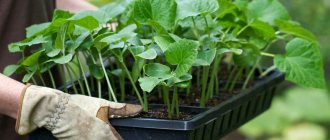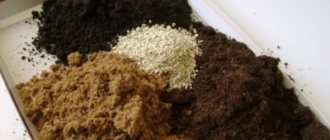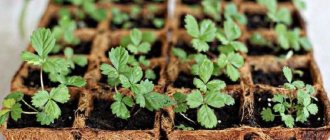White cabbage is a must in every vegetable garden. It is good fresh, as a filling for pies and as a side dish for meat dishes; sauerkraut is especially healthy and tasty.
The cabbage white beauty has a long growing season. It is possible to obtain a bountiful harvest of cabbage only by growing strong and healthy seedlings at home. And you will learn how to do it correctly from the materials in this article.
Optimal sowing dates for cabbage
The timing of sowing cabbage seeds to obtain seedlings depends on the climate of the particular area and the variety of vegetable. There are early, mid-ripening and late-ripening varieties that differ in the duration of the growing season.
It is considered correct to plant cabbage in open ground, which has from 5 to 7 true leaves. This development corresponds to the age of 6-8 weeks. Taking into account the additional time for seed germination (about 5-7 days), it turns out that the optimal time for sowing cabbage seeds is 8-9 weeks before planting in the ground.
The vegetable is not afraid of frost, but develops better at a temperature not lower than +18 degrees.
Depending on the climate, cabbage seeds are planted:
- in the Moscow region and central zone in April;
- in the Urals and Siberia - in the second ten days of April;
- in southern Russia, seeds are sown in March.
Early ripening varieties of cabbage produce a harvest already in late June - early July. They are sown very first, planting seedlings as soon as the soil warms up.
Advice. The installation of high, warm beds can significantly speed up the planting of cabbage seedlings. They are constructed from a layer of plant residues, straw and manure, with fertile soil poured on top. Due to the height of the structure and the burning of manure, the bed is much warmer for the roots of the plant than ordinary soil.
There is no need to rush into planting late varieties (they are grown for storage and pickling). If the heads of cabbage are poured too early, before the first frost arrives, they will not be stored well.
Step 1: Choose the right variety
Before purchasing seed, you must decide what kind of cabbage you want to get, when and for what purpose you will use it. This is what primarily affects the sowing time. If you want to enjoy a salad with early cabbage, that’s one thing, but if you intend to use it for storage or fermentation, that’s another.
Cabbage varieties. 1. Wild annual. 2. Headed. 3. Colored. 4. Kohlrabi. 5. Brussels. 6. Savoy.
As for white cabbage, it can be early, mid and late ripening. Representatives of the first category are low-yielding, with an average density of heads, and the size of the fruits is small (weigh a maximum of 1.5 kg). As for mid-season cabbage, it is suitable for canning and summer use, but late types are optimal for long-term fresh storage.
Note! The timing of not only ripening, but also sowing of cabbage for seedlings differs. This should not be forgotten. Although these terms are interrelated.
How to grow cabbage seedlings: step-by-step instructions
There are many ways to sow cabbage seeds. You can sow vegetables in greenhouses, hotbeds, keep them on your home windowsill, choose large boxes or individual pots for growing. All options have pros and cons, but choosing the right soil is important.
Selection of soil and planting containers
Plants of the cruciferous family require loose, humus-rich soil. Seedling soil can be purchased at the store by purchasing the “Universal” mixture or the special “For cabbage” mixture.
You can prepare the seedling substrate yourself. To do this take:
- 1 part non-acidic peat;
- 1 part coarse river sand;
- 1 part fatty humus;
- 1 part of turf forest soil (usually the soil is collected from under the oak tree in the fall).
The components are thoroughly mixed. It is recommended to sterilize the soil before adding additional additives in order to destroy possible overwintered pests. For this reason:
- calcined in the oven at 170 degrees for about 15 minutes;
- steam in a water bath for about an hour;
- spill the ground with a hot raspberry solution of potassium permanganate or the drug Maxim.
The gardener chooses the method of soil disinfection that is convenient for him. Store-bought soil, as a rule, has already been treated and does not require etching.
For each bucket of soil mixture add 2 cups of wood ash (ash is used only from burning trees and grass!), 40 g of superphosphate.
Important! If fertilized soil is taken from garden beds for cabbage seedlings, you cannot take soil from the places where cabbage, mustard, rutabaga, radishes and radishes grew. In such soil, pathogens and insect pests can survive.
White cabbage can be sown in common seedling boxes, then planting the plants in separate containers. You can do without picking by simply sowing the seeds less often. But, in this case, the seedlings may end up stretched due to lack of light.
They practice planting cabbage in peat tablets, separate 100-150 gram cups. Such plants do not require picking, but at the initial stage of cultivation, such a number of cups “eats up” a lot of space on the windowsill.
Experienced gardeners practice an interesting method of obtaining strong seedlings of white cabbage by sowing seeds in “snails”. This method of sowing vegetables will be discussed in more detail below.
Preparing seeds for sowing
The need to treat cabbage seeds depends on their condition. Nowadays, white cabbage seeds are available for sale, which are already enclosed in a shell of nutrients and treated against diseases.
They are noticeably larger than ordinary seeds and have a bright color (green, blue, red). Such seeds are called “coated” seeds; they do not require additional processing.
Cabbage seeds, collected independently from plants, or purchased unprocessed, require pre-sowing preparation. Cruciferous plants often suffer from fusarium and other fungal diseases. The causative agent of the disease may be on the seed.
Planting material is treated with one of the following products:
- Fitosporin (half a teaspoon of powder in half a glass of water);
- rich pink solution of potassium permanganate.
The seeds are kept in potassium permanganate for about 15 minutes, in a solution of specialized preparations - following the instructions. After dressing, the seeds are dried, scattered on a clean cloth, until they become free-flowing and sowing begins.
Practiced:
- keeping cabbage seeds in an aloe solution (a couple of drops per glass of water);
- heating the seeds in hot water (temperature +50 degrees) for 15 minutes;
- soaking in a solution of hydrogen peroxide (1 tablespoon of 3% peroxide in 2 glasses of water) for 12 hours.
All these treatments are aimed at disinfection, accelerating germination and strengthening plant immunity.
Interesting. Some gardeners use a technique aimed at stimulating germination and hardening the seed. The essence of the method is that after soaking in a warm fungicide solution, the cabbage is placed in a cloth and put in the refrigerator for a day. Store the seeds in the vegetable compartment at a temperature of +4 +6 degrees. It is believed that such hardening has a positive effect on the germination power of the seed and strengthens the immunity of the future plant.
How to properly plant cabbage seedlings
Cabbage seeds are small, they should not be immersed in the soil to a great depth - they may not sprout. The recommended planting depth is 7-9 mm, the distance between seeds is 2.5-3 cm (subject to subsequent picking) and up to 6 cm (without picking).
Cabbage must be sown in moist soil. This is especially important for coated seeds. If there is a lack of moisture in the soil, the seed coat may not dissolve and prevent the sprout from germinating.
The container with cabbage is covered with plastic or cling film, a piece of glass and removed for germination. Comfortable temperature for germination is +20 degrees. Shoots may appear as early as day 3 or germinate within a week.
Disease Prevention
As noted above, cabbage is susceptible to diseases, which are mainly caused by fungi. In most cases, blackleg and root rot are observed.
Black leg of cabbage seedlings
It is quite difficult to cure cabbage from them; often treatment does not bring any results. Therefore, these diseases are easier to prevent.
- Soil mixture and seed material should only be from trusted manufacturers.
- Pots/boxes for seedlings, as well as the tools you use in your work, must be disinfected and clean.
- Immediately before sowing, the soil should be disinfected and the seeds should be treated.
- It is important that the distance between seedlings is sufficient.
- Frequent watering is undesirable, because the soil must have time to dry out.
The distance between plants should be sufficient, because cabbage does not like thickening
But if the seedlings do become sick, take appropriate measures immediately before the disease spreads. Ideally, all diseased plants should be destroyed, but if we are talking about valuable specimens or most of the plantings, you can try to save the seedlings. First of all, move the diseased plants to another place, and spill the remaining plantings with a solution of potassium permanganate, sprinkle with wood ash, and then loosen the soil to dry.
Wood ash
Note! You can also try to save diseased plants with products such as “Rizoplan” or “Trichodermin”, created on the basis of a special mycelium that prevents the development of pathogens. This will improve the soil health and destroy pathogens.
Now you know how to grow healthy cabbage seedlings with your own hands
Caring for cabbage seedlings after germination
White cabbage is considered an unpretentious crop, but it also has its own preferences. In order for the seedlings to grow strong, healthy and tolerate transplantation into open ground well, they need proper care after germination. And it consists in timely watering, fertilizing and maintaining the temperature regime.
Lighting and temperature conditions
Immediately after emergence, cabbage seedlings are placed on the brightest windowsill. If the windows in the apartment face north and there is not enough natural light, it is necessary to hang a fluorescent lamp or a special phyto lamp (at a height of 40-50 cm) above the seedlings.
The comfortable air temperature for seedlings is +20 +22 degrees during the day and +16 +17 at night. It is difficult to achieve such conditions in an ordinary apartment. Dry air is added to actively working heating, and the seedlings are stretched.
Gardeners solve the problem in different ways:
- Separate boxes with seedlings from batteries with film or foil;
- at night, open the window, separating the cabbage from the rest of the room with a film curtain;
- They build small greenhouses using seedling boxes and keep the cabbage on a glassed-in balcony or loggia.
Placing bowls of water near the bowls with crops will help increase the air humidity to a level that is comfortable for seedlings.
Still, the strongest and most hardened seedlings are obtained if you sow cabbage in a greenhouse or greenhouse. The abundance of light and coolness prevent the plants from stretching, and nighttime temperature drops to +5 degrees only harden the cabbage.
Good seedlings have a bluish-green tint, this is a sign that the plant was grown in comfortable conditions.
Picking seedlings
Densely sown cabbage is picked when the second true leaf opens on the plants. For transplanting, prepare separate plastic glasses with a capacity of 200 ml or a spacious seedling box, 8 cm deep. In the box, seedlings are placed at a distance of 6-8 cm from each other.
Before planting, seedlings are watered abundantly. It is convenient to pull seedlings out of the soil using a regular fork. When transplanting cabbage into new soil, the plant is buried in the soil to the level where the real leaf begins to grow.
Some gardeners pinch the central root of the seedling, shortening it by a quarter. It is believed that this procedure stimulates the growth of lateral suction roots and the plant receives more nutrition.
Important! Cabbage stems are crunchy and brittle; you cannot carry the plant by picking it up by the leaf.
The first few days after transplanting, it is necessary to maintain constant soil moisture. To reduce stress, you can spray the plants with Epin solution.
Watering and fertilizing
Cabbage is moisture-loving, but does not tolerate stagnation of moisture in the soil. It is watered 2-3 times a week, making sure that water does not accumulate in the pan after watering.
If the seedling soil has been thoroughly filled with humus and superphosphate, the cabbage does not require additional fertilizing. If plants have pale leaves and are stunted in growth, they are likely not getting enough nutrition. A week after picking, the seedlings are watered with a solution of any complex mineral fertilizer (Kemira, Raduga, Agricola).
Hardening
If cabbage is grown in the conditions of a standard city apartment, at high temperatures, it will be pampered and elongated. Planted in the ground, such cabbage can die even from slight frosts.
Starting from the age of 5 weeks, the plants are accustomed to coolness - they are taken out to the balcony, the window is opened at night (at an air temperature at night not lower than +7 +9 degrees). Plants are gradually accustomed to coolness, starting with a couple of hours of being outside.
It is easier to harden seedlings in a private house. They put it outside, constructing a simple greenhouse from wire arcs and film or white lutrasil.
Temperature maintenance
The optimal temperature for seed germination is considered to be 18-20°C. After white cabbage sprouts, the temperature should be lowered slightly: to 15-17°C during the day and to 8-10°C at night. This difference between day and night temperatures will help harden the seedlings and prevent them from stretching.
If you are growing cauliflower seedlings, keep in mind that they do not tolerate low temperatures well. To grow it during the day and night, the air temperature should be 5-6 degrees higher than when growing white cabbage.
Growing cabbage seedlings without picking
Despite the fact that cabbage easily tolerates transplanting, picking delays the growth of bushes for about a week. It is quite possible to do without this procedure if you sow the cabbage directly into separate glasses or into peat tablets.
Place 1-2 seeds in each glass (the excess sprout is later removed) and grow the vegetable according to the standard scheme. When preparing a dozen plants, this method is convenient and not troublesome.
If you need to get 60 or more bushes, use a simpler method: sowing cabbage in one common box. The seeds are immediately distributed according to a 6 by 6 cm pattern, providing the seedlings with enough space to grow.
How to grow cabbage seedlings in a snail
An original method of preparing seedlings that significantly saves space on the windowsill.
For this planting method you will need:
- some seedling soil;
- foam tape (linoleum backing), 10 cm wide and about a meter long;
- elastic band or rope;
- wide round dishes;
- seeds.
The tape is laid out on the table along its entire length, soil is poured onto it in a layer of 1-1.5 cm. Stepping back 1 cm from the top edge, cabbage seeds are laid out along the entire length of the tape, at a distance of 3-5 cm. Sprinkle them with soil.
Using caution, carefully roll up the roll with seeds and soil, forming a “snail”. Secure the structure with an elastic band or string.
The snail is placed upright (side with the seeds facing up!) in a prepared container with water poured into it. That's it, landing is complete.
Cabbage seedlings feel good in this design until picking. It is very convenient to plant plants - just unroll the tape and the roots will appear “in full view”. You don't have to untangle or soak anything.
Preparing the land for planting
When cabbage seedlings are ready for transplanting, you need to prepare the soil. In advance, in the autumn, you need to dig the ground deeply. In the spring it is necessary to control weeds; before planting, depressions are made in the soil corresponding to the size of the roots of the seedlings.
If the soil is acidified, it needs liming. In the spring you need to add nitrogen fertilizers to the soil, in the fall - phosphorus and potassium fertilizers, this also promotes the growth of cabbage.
Many summer residents are wondering how to feed cabbage? She really loves organic fertilizers, so humus is perfect for this purpose.
If the site is fertilized with humus or manure, then on such soil this vegetable will feel very good and, accordingly, grow.
When to transplant cabbage seedlings into open ground
White cabbage is planted in the garden in May - early June. Light frosts are not harmful to the crop if hardening has been carried out. It is advantageous to place early varieties in the ground as early as possible in order to get a harvest at the end of June.
To protect against serious night frosts, plants are protected with film, lutrasil and straw (loosely covering the bushes “head over heels”).
Late cabbage is planted in late May - early June. Frosts at this time are no longer dangerous, but young and tender plants can become victims of the cruciferous flea beetle. You can protect the seedlings by sprinkling the bushes with tobacco dust, fine wood ash or mustard powder.
For cabbage, prepare a bed in an open sunny place. Good crop predecessors: beans, cucumbers, pumpkin. Do not plant it after plants of the Cruciferous and Solanaceae families.
For each meter of cabbage bed, add a bucket of rotted manure or compost, 30 g of superphosphate and 20 g of potassium sulfate.
The planting pattern for early cabbage is 30 by 40 cm, mid-season cabbage 40 by 50 cm, late cabbage 60 by 70 cm. Seedlings are planted in cloudy weather or in the evening, when the sun has already set. For the first 3-4 days, the cabbage is “watered” - watered abundantly, irrigating the leaves. This creates the air humidity necessary for better plant survival.
Problems when growing cabbage
Healthy cabbage seedlings have bright green leaves with a bluish bloom, they are stocky and strong. A change in the appearance of plants indicates emerging problems.
- The leaves are turning yellow.
Pallor and yellowing of cabbage leaves indicates a lack or excess of moisture and a lack of nitrogen in the soil. If watering is organized correctly, the seedlings are fed with a solution of chicken manure (1 to 15).
Important! Yellowing and dying of cotyledon leaves is a natural process.
- The seedlings are stretching out.
A clear lack of light and too high a temperature. Eliminate the cause of stretching by installing additional lamps and placing the seedlings in a cool place.
- Cabbage has stopped growing.
Soil poor in nutrients leads to slower growth of seedlings. The seedlings are fed with complex mineral fertilizer.
- The cabbage falls, a brown “belt” is visible on the stem.
Blackleg disease is a common disease of seedlings caused by overwatering. As a preventative measure, the soil is regularly loosened and sprinkled with ash or sand after watering. During cultivation, seedlings are watered with Fitosporin 2 times.
Timely watering
The main principle of watering cabbage (both adult plants and seedlings) is that it should be watered as the soil dries out. However, it is important to remember that cabbage is a moisture-loving plant, so you should not allow the soil to become too dry. Excessive watering, in turn, can cause fungal and viral diseases. Therefore, water should always be in moderation.
On average, cabbage seedlings are watered once every 7-10 days. After watering, the room in which the seedlings are located can be ventilated. However, remember that this culture is very afraid of drafts.
Cabbage seedlings should not be watered with cold water. As in the case of soaking, the best water for irrigation is considered to be rain or melt water. It is good to water the cabbage with ordinary running water, passed through a filter and left for 1-2 days at room temperature.











